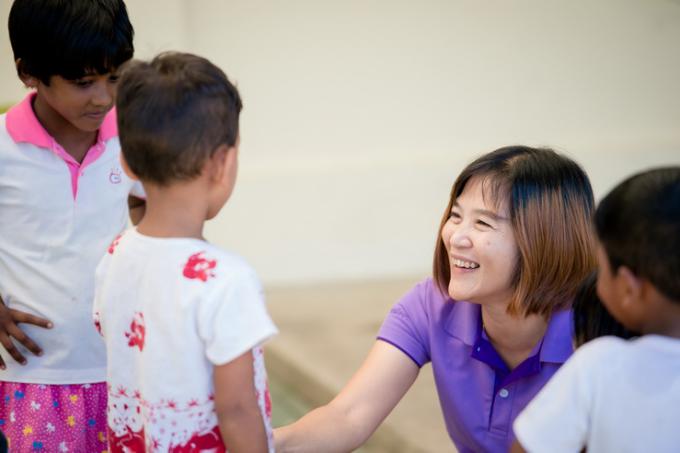SAVE THE CHILDREN IS MAKING A DIFFERENCE, SAY SHELTER STAFF

“When the children first arrived here, they looked haggard, malnourished and dirty. Most of them were wounded, had scars, rashes, and skin disease such as scabies,” Natnicha Chandee, a social worker at Phang Nga shelter told us when asked about the group of refugees and migrants from Bangladesh and Myanmar under their care. She has been working with the shelter for eight years. “In March 2015, we received about 70 of them. Although we had the experience of working with these people two years ago, this is a great challenge for us as the number is much higher than last time. In the last two years, we only received 30-40 refugees.” She continued, “The new arrivals this year were quite confused why they ended up here when their destination is Malaysia. Many of the women travelled to be reunited with their husbands who have been working and sending money to them from Malaysia.”

“It was a great challenge to communicate with them as we don’t have a translator. We couldn’t talk and didn’t understand each other. We didn’t know where to start,” she explained. “Then we began to take photos and collect basic information, and provided them food, new clothes and medicine,” added Natnicha.

Dararat Sutes, Director of Phang Nga shelter said: “Under our responsibility, we normally take care of less than 20 people at the shelter for a short period of time because we are the first stop for children and mothers in need. They [migrants] will usually be transferred to other Protection and Occupational Development Centres after a while. This time, we have to adapt our ways of working to be able to manage this large group of refugees from Bangladesh and Myanmar.” Dararat has been in the social work path for almost 20 years now. She started working as a social worker at Thailand’s Ministry of Social Development and Human Security; and has worked for six years as the Director of Phang Nga Home for Children and Family.
“Fortunately, we receive support from many organisations such as Save the Children and others. Otherwise, it’d be hard for us to handle,” added Dararat.

The Director expressed that her staff are overwhelmed with the workload, but are trying their best to take care of these unfortunate people and provide what is necessary. Gradually, they have been able to build good relationships and trust among those living in the shelter.
Currently there is only one translator at this shelter who is financially supported by Save the Children and Diocesan Social Action Center of Suratthani Catholic Foundation (DISAC). “It made a big difference having someone who can help us communicate and understand their needs,” said Dararat.
Save the Children plays a role in providing support to children in terms of awareness-raising on education and hygiene. We also conduct reading activities for children. There have also been positive changes in beneficiaries especially in hygiene for children after Save the Children raised awareness and taught them through games and activities. Children are taking better care of themselves, and try to keep the shelter clean because they do not want to have skin disease anymore.
When asked about current challenges, both Dararat and Natnicha replied that they were still worried about the mothers in the shelter. “Although they have some activities to do during the day such as sewing and crafting, we feel they are still in distress.” Dararat explained further, “We tried different options, but nothing seems to work. They are not motivated and this is a big challenge for us.”

“We look forward to working closely with Save the Children and hope that together we can help children develop to their full potential during their stay here,” Dararat ended.



